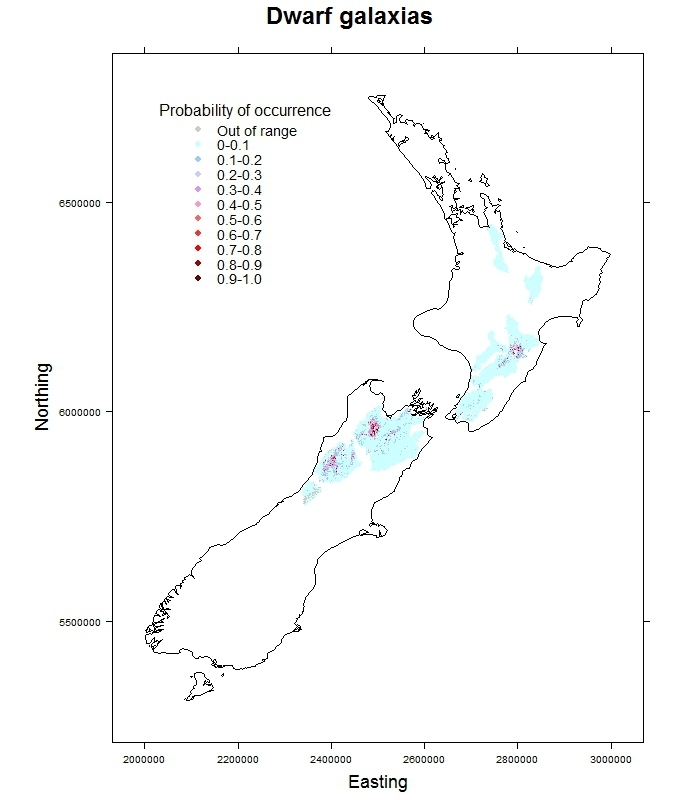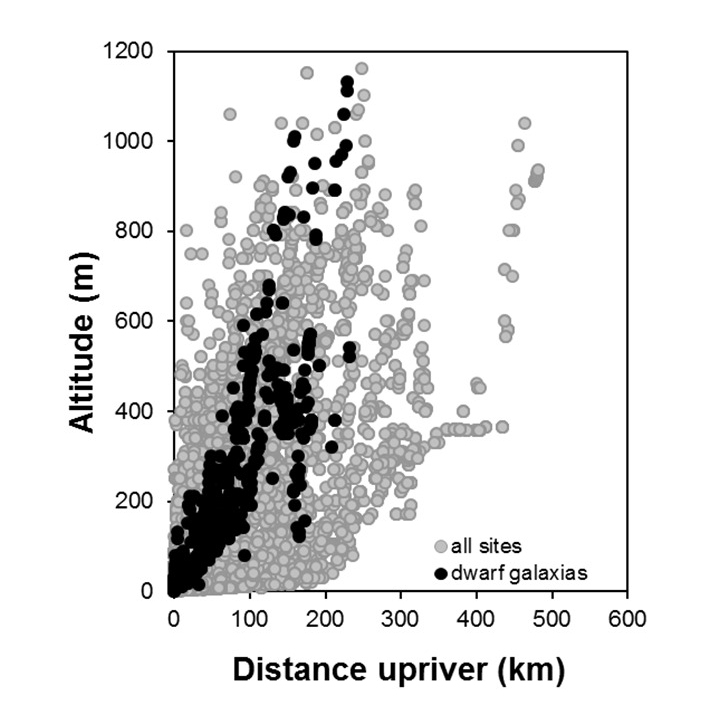Dwarf galaxias
Galaxias divergens (Stokell, 1959)

The scientific name for this species indicates that it diverges from the other members of the Galaxiidae family: it has only 6 pelvic fin rays compared to the more usual 7 for the other galaxiids. The number of caudal fin rays (15) is also different from most other galaxiids, except for Eldons galaxias. However, dwarf and Eldons galaxias do not co-exist, with Eldons galaxias being confined to Otago.
The dwarf galaxias is amber to olive green in colour with dark brown blotches on the sides and back. The belly is silvery. The whole life cycle of the dwarf galaxias occurs in fresh water, and the maximum size of these fish is about 90 mm, although most adults are usually less than 70 mm in length. Aquatic larvae of mayflies and midges are the most commonly eaten foods of the dwarf galaxias.
Of the non-diadromous members of the Galaxiidae family, the dwarf galaxias has the widest distribution, although this pattern is extremely fragmented. In the North Island, dwarf galaxias occur in the headwaters of the Waihou River near Putaruru, at a few sites in the Rangitaiki River near Galatea, in Hawkes Bay, and the Wellington region. In the South Island, it occurs in Marlborough and Nelson, and on the west coast as far south as the Hokitika River. Recent studies show there are some genetic differences between the populations, but probably not enough to warrant any separate species.
![Dwarf galaxias - distribution map [2024]](/sites/default/files/styles/wide/public/2024-02/Dwarf%20galaxias.jpeg?itok=vtbKoTK6)


